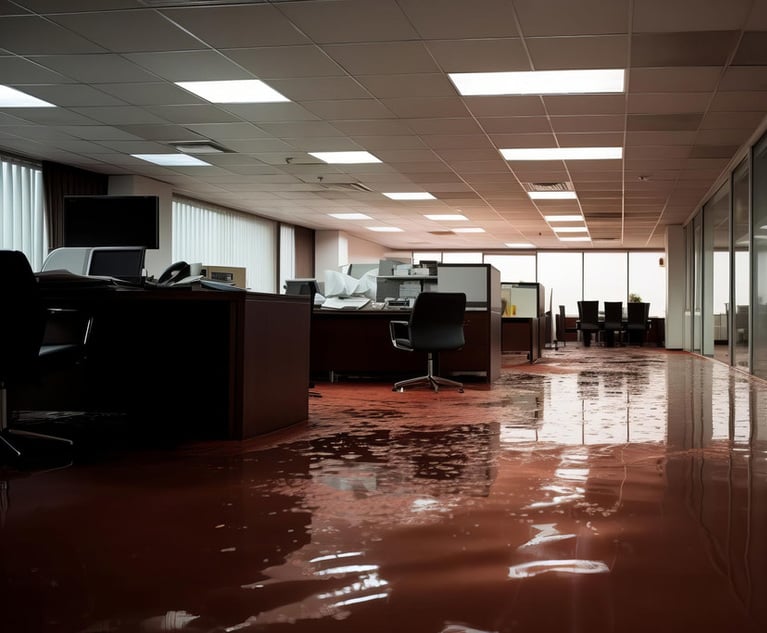Re Opportunities Abound In Latin America
|Over the last 10 years, Latin America has become one of the mosteconomically vital regions in the world. Privatization, legalreforms and the elimination of trade barriers have opened themarket to global companies.
|Foreign insurers and reinsurers are now permitted to own 100percent of local firms and have been given substantial freedom inproduct design, pricing and marketing. Risks have also emerged as aresult of new construction projects, directors and officersliability, surety, bankers blanket bonds, and professionalliability. In addition, the tendency by insureds and reinsureds toincrease their risk retentions has generated an appetite foralternative risk transfer products as a means of stabilizingresults.
|Despite these promising opportunities for insurers andreinsurers, however, political instability in many of the LatinAmerican countries remains a major obstacle to regional expansion.For this reason, most underwriters and brokers evaluate and monitoropportunities on an individual country basis.
|Many countries in this region are catastrophe-prone, withearthquakes, hurricanes and floods constituting the driving forcesbehind the purchase of most property coverage. Such coverage istypically structured as catastrophe excess-of-loss treatyreinsurance. Although reinsurance against natural disasters isstill generally available, rates are rising substantially forexcess-of-loss treaties as well as for facultative reinsurance onlarge risks.
|Local insurers have tried to avoid rising rates in theinternational facultative markets by having four or five localinsurers participate on the policy as “coinsurance panels.”However, reinsurers are starting to clamp down on thispractice.
|Although market firming is not across-the-board, the powerindustry has been particularly hard hit, as many of Lloydsunderwriters are withdrawing from this area. Heavy losses arisingfrom machinery breakdowns have attracted much attention and willreceive more as carriers take more conservative positions onunproven gas turbine technology.
|Of course, the industrys results in the region vary widely bycountry:
|Argentina. Sweeping deregulation came toArgentinas reinsurance market in 1991, marking an end to governmentsubsidies, tariffs and guaranteed pricing. Underscoring thesechanges was the end of hyperinflation in the mid-1990s.
|These changes had an enormous impact on the insurance industry,and many foreign investors were attracted to Argentina. Today, mostof the local industry is in the hands of foreign, but locallyestablished insurers, with few domestic firms remaining as seriousplayers in the area of industrial/corporate insurance.
|A new workers compensation law was introduced in July 1996.Complementing this law was an insurance regulation stating that theonly way to write this business was to establish a monoline companyor to self-insure. Local and international insurers rushed toestablish these companies, with reinsurers responding as well,taking this line of business away from the multiline insurers.
|Meanwhile, healthcare deregulation remains a highly politicalissue. Healthcare is controlled by unions, and free competitionwould threaten their biggest source of income. Deregulation willhappen eventually, and when it does, the health insurance marketwill be the biggest area of opportunity for U.S. insurers andreinsurers.
|The fact that Argentina has practically no insured catastropheexposure has also increased its attractiveness to reinsurers.
|Brazil. The reinsurance market conditions inBrazil remain largely irrelevant to cedents. This is because themost important event affecting the industry–the auction of a 45percent stake in the countrys monopoly government reinsurer,Instituto de Resseguros do Brasil–has not yet taken place.
|The April 25, 2000 auction date was cancelled, and a new datehas not been set as of this writing (July 2001). Once IRB isprivatized, its monopoly will end, although some form oflegislation is expected to protect local insurers for a period oftime.
|The promise of privatization has brought to the country a numberof foreign reinsurers and reinsurance brokers. They are fullyprepared to operate in Brazil after the reinsurance monopoly ends,and their presence has already had an influence on the localmarket.
|Chile. In 1980, Chile became the first countryin Latin America to deregulate its insurance and reinsuranceindustries. The state reinsurance monopoly, the CAJA, began tooperate as a private reinsurer, and foreign companies were allowedentry. Since that time, its insurance market has become one of themost sophisticated in the region.
|Colombia. Colombia is one of the richestcountries in natural resources in Latin America. However, the risksof doing business there are substantial. Communist guerrillasremain a serious threat, and kidnappings, robberies, hijackings andmurders are common.
|Opportunities have developed as a result of the passage inDecember 1993 of Law 100, which provides for pension and healthcarereforms.
|Reinsurance buyers are extremely conscious of quality security,and with the amount of first-class reinsurance capacity availablefrom the market, many Colombian insurers have improved the qualityof their reinsurance security.
|The insurance market in Colombia is still suffering the effectsof the Andean economic recession, which has caused profits to fall.Profits have also suffered as a result of restructuring in responseto government measures to strengthen the industry financially.
|Mexico. Passage of the North American FreeTrade Agreement has allowed foreign investments to flow intoMexicos insurance sector. At the same time, significant insuranceindustry reforms have strengthened the market and increasedinvestor confidence.
|Vicente Foxs election as president initiates a new era inMexico, not only politically but also in the financial andindustrial arenas. His free market orientation is likely to helpprivatize the government-controlled healthcare system, which willcreate a need for stop-loss and excess-of loss reinsurance to coverexpensive treatments. Other opportunities will result from theprivatization of those industries that are still governmentcontrolled, which will necessitate wider coverages than the onesthat the government currently purchases.
|The majority of small businesses and homes are not insured. Thisoffers enormous growth potential in the property insurance line. Asmore and more property is being protected by insurance, insurersare turning to the reinsurance market to limit their exposure andincrease their capacity.
|After a number of soft years, the reinsurance market in Mexicoturned sharply in 2000, with rate increases in the 50 percentrange. This is due in part to the hardening of the retrocessionmarket, on which Mexico has a heavy reliance.
|Venezuela. Diminishing investor confidence inVenezuela as a result of political and economic instability hasaffected the local insurance industry. The stagnant economy hascreated little growth opportunities for companies. This, coupledwith poor results of the carriers, has reinsurers taking a cautiousunderwriting approach.
|Venezuela's status as a mono-export country makes their economyespecially vulnerable to economic fluctuations, as their role onthe world petroleum stage remains both a blessing and a curse.
|Meanwhile, nearby, insurance growth in the Caribbean is focusedprimarily on the property sector. The hardeningproperty-catastrophe market has had an exponential effect on theislands, with their rate increases more substantial than in LatinAmerica. Capacity for the Northern Caribbean (the half that hassuffered all the recent losses) is scarcer than in the SouthernCaribbean, which, by contrast, has had low loss activity. Thisdisparity is reflected in rates, with prices for the NorthernCaribbean approximately double that of the Southern islandchain.
|Despite pockets of instability in the region, there isconsiderable optimism for growth. Overall foreign investment isexpected to continue, signifying important opportunities forinsurers and reinsurers seeking to diversify their globalportfolios.
|Kathleen Smith is a managing director of Guy Carpenter &Company in Miami.
Reproduced from National Underwriter Property &Casualty/Risk & Benefits Management Edition, September 10,2001. Copyright 2001 by The National Underwriter Company in theserial publication. All rights reserved.Copyright in this articleas an independent work may be held by the author.
Want to continue reading?
Become a Free PropertyCasualty360 Digital Reader
Your access to unlimited PropertyCasualty360 content isn’t changing.
Once you are an ALM digital member, you’ll receive:
- All PropertyCasualty360.com news coverage, best practices, and in-depth analysis.
- Educational webcasts, resources from industry leaders, and informative newsletters.
- Other award-winning websites including BenefitsPRO.com and ThinkAdvisor.com.
Already have an account? Sign In
© 2024 ALM Global, LLC, All Rights Reserved. Request academic re-use from www.copyright.com. All other uses, submit a request to [email protected]. For more information visit Asset & Logo Licensing.








